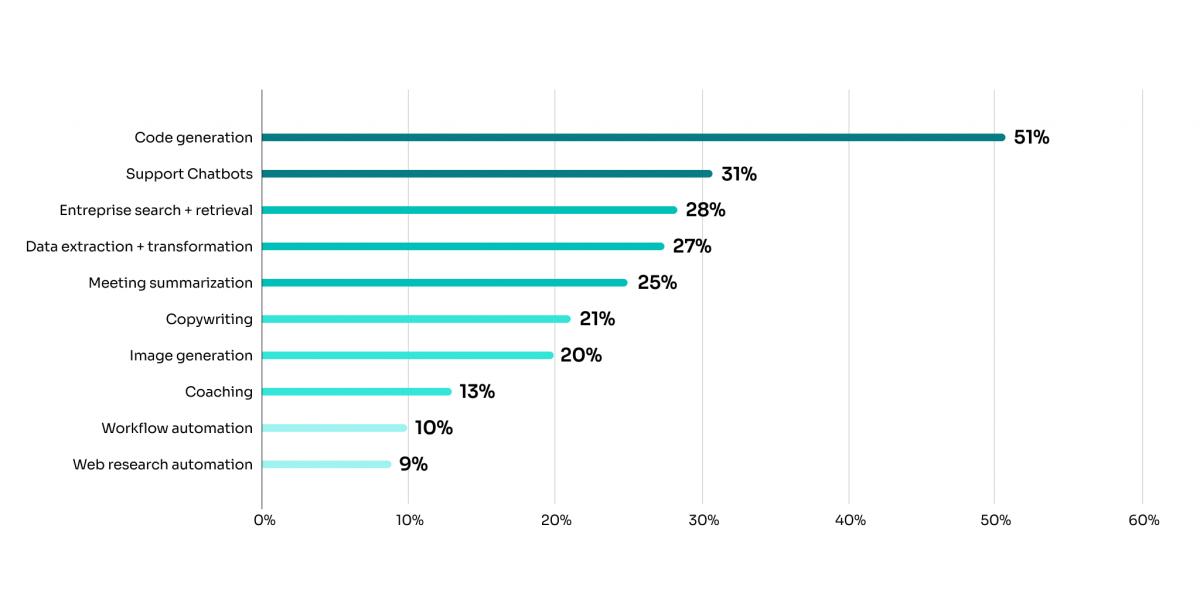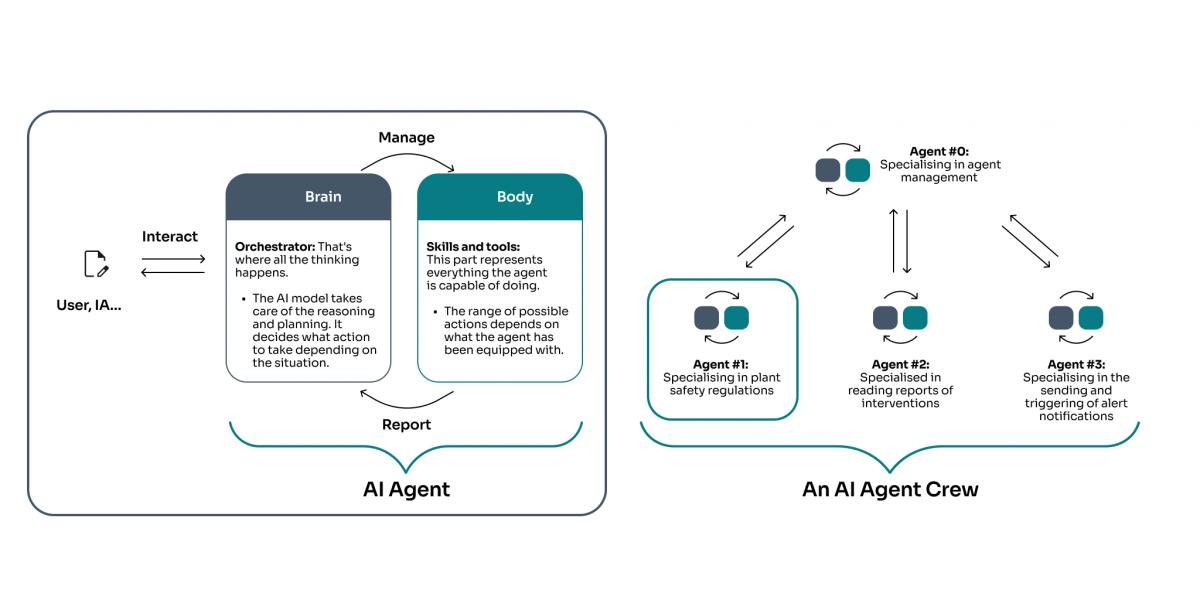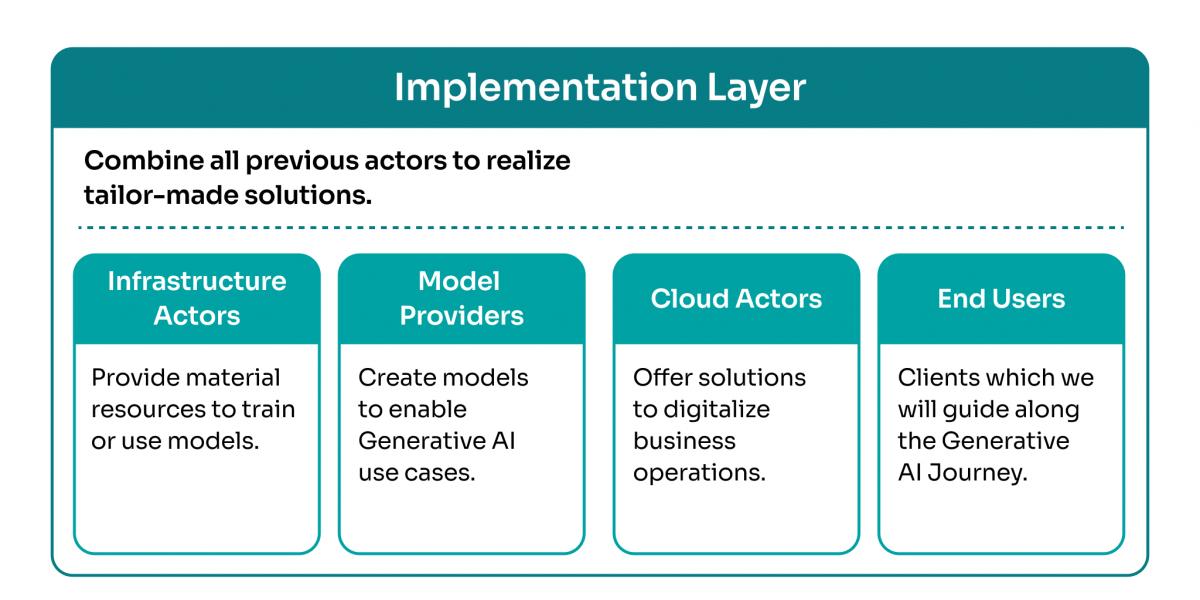SEC Division of Examinations Releases 2026…

Organizations are shifting from isolated chatbot pilots to scalable, ROI-driven use cases powered by advanced models and agentic systems.

Sia has supported this evolution by building a ready-to-go GenAI platform that enhances productivity across business functions while addressing industry challenges such as risk control, energy efficiency, regulatory compliance, and solution industrialization.
In 2023, companies were taken aback by the capabilities of LLM technology. By 2024, they were actively experimenting with it and developing use cases. Now, in 2025, we observe that companies are continuing to invest heavily in GenAI, but with a more proactive and value-driven approach.
Generative AI has made remarkable strides from late 2022 to 2025. Initially, there was GPT-3.5, but now we have advanced models like OpenAI-o3, DeepSeek R1, Claude Sonnet 4, Gemini 2.5 Pro, and many others. Today's open-source models, such as Mistral Small 3.1, match the performance of the Llama 2 70B model released two years ago, despite being three times smaller. The gap between open-source and closed models is rapidly narrowing.
The race for Generative AI has become so significant that every major global player has joined in. Currently, the market leaders are divided between the US and China, with Europe emerging as the determined underdog. The United States remains the market leader, with companies like OpenAI, Anthropic, and Google, but faces close competition from China, where companies like DeepSeek, ByteDance, and Alibaba are actively contributing to the AI community. In third place, but with serious potential, is Europe, with Mistral as its flagship company.
The adoption of Generative AI has been gradual and is expected to continue increasing as new use cases emerge. During the initial exploration phase, one use case stood out: chatbots.
Chatbots were significantly enhanced by leveraging the models' ability to utilize information provided in prompts. This enabled the creation of more intelligent chatbots capable of answering questions from updatable databases. This shift transformed the traditional layered approach into a more fluid offering and revitalized R&D in search engines, enhancing information retrieval capabilities.
Another prevalent use case was Code Assistants, which empowered developer teams by streamlining coding processes. Although generating code requires a deep understanding of programming languages and code context, Generative AI, being a developer-created solution, found a receptive market among developers. Vendor studies indicate that 51% of GenAI usage in companies is related to code generation. Due to high demand, this area has seen significant development, making it one of the most lucrative markets today. Numerous start-ups, such as Cursor, Windsurf, and Lovable, have emerged, with some achieving over $1M ARR in less than a month.
Emerging use cases also include video and image-related applications, such as virtual try-ons and image editing. These have been enhanced by the latest diffusion and control models, like those provided by Stable Diffusion. The rise of multimodality and extended context capabilities has improved document-level analysis, allowing models to incorporate more context and register image-related information at a higher level.

Menlo Ventures, 2024, The State of GenAI in the enterprise
An increasing number of leaders in the AI community began experimenting with a simple idea: what if we enabled generative AI models to interact with their environment? Initially, this concept was known as function calling. However, as the requirements became more defined, it evolved into what is now referred to as tooling an agentic system. This is precisely what we will discuss in the next section.
The defining topic of 2025 is undoubtedly agentic AI. Amidst the buzz surrounding these technologies, Google, Anthropic, Hugging Face, and Sia define agentic AI as follows: give a Generative AI model some tools, a task, and let it iterate until it accomplishes it.
The key point here is the paradigm shift: this is not a Generative AI model you converse with or query for knowledge. Instead, it's a model you instruct to perform a task and await the results. This perspective positions the model as part of a framework rather than the sole output generator, unlocking a multitude of new use cases.
This iterative process demands advanced thinking, and it was within this context that reasoning models, including the pioneering o1, gained prominence.
Reasoning models possess stronger capabilities in both planning and execution and are becoming the standard. Even Europe is entering the race, with Mistral releasing its Magistral models that match the performance of the best Chinese open-source models.
The use cases we previously mentioned involve complex tasks. They utilize tools that may not be immediately apparent to a random Generative AI model. These tasks require the model to evaluate its outputs to determine when to continue and when to stop. Ultimately, they demand reasoning. This is why stronger models and the ability to think, as developed by frontier labs, are essential for enabling such capabilities to emerge.
An AI Agent is made up of two parts: a brain, which defines and orchestrates actions and a body, which executes them. An AI Agent is an autonomous entity specialized for specific use cases. The strength of agents lies in their ability to combine to perform complex workflows.

At Sia, we quickly realized that focusing solely on traditional chatbot projects would limit the true potential of Generative AI.
Instead of developing multiple proofs of concept (POCs) for specific topics, such as creating a chatbot for HR documentation or a solution for structuring sales data, we chose to consolidate these solutions. We have assisted dozens of companies in developing GenAI platforms, enabling them to transform all their business activities while minimizing development costs. This was the first step towards Agentic AI.
The potential of these GenAI platforms is immense: automating the extraction and structuring of handwritten or scanned documents according to a database schema; automating the completion of administrative documents or report writing using information from a vast pool of documents; or reducing the workforce needed for support or call centers by leveraging multimodal models and knowledge bases.
This ready-to-production platform will enable all of these use cases without requiring any additional development.
The current landscape of Generative AI can be divided into five major actors.
The first group consists of infrastructure actors. GPUs and microprocessors are central to the AI race, with Nvidia holding a dominant position in the GPU market. Sia collaborates closely with Nvidia's engineers to develop tailored solutions that meet our clients' specific needs.
The second group is the model providers. These actors create the models used to execute various use cases. They are few in number and are in fierce competition to produce the best tools for automating processes. Sia maintains ongoing partnerships with major model providers including NVIDIA and AWS.
Next are the cloud actors. Cloud providers empower companies by offering scalable, cost-effective, and flexible solutions that enhance business operations, innovation, and security. AWS is one of the most well-known and robust providers, and Sia is recognized as one of its few Generative AI partners.
The penultimate actors in the industry ecosystem are companies like us, who work at the implementation layer. Our goal is to aggregate the previous tools and combine them to power solutions tailored to your needs. This is why we train our data scientists on the latest tools, including AWS certifications and Generative AI courses, and have a dedicated unit for Data Engineering processes.
Finally, the last group consists of the end users and companies. These are the thousands of clients Sia has supported over the years, who have chosen to trust us for the implementation of Generative AI solutions within their ecosystems.

At Sia, we have established three global themes for the next five years concerning Generative AI.
The first focus is on Availability and Energy. As data centers expand rapidly, they present new challenges in terms of material availability and energy grid management. Our aim is to leverage our expertise in energy and data to develop solutions that are both effective and efficient, positioning us as pioneers of a more sustainable future.
The second focus is on Risk Control. This involves both the design of models and their application, with particular emphasis on the application layer, especially in Europe, where the AI Act oversees AI system implementations. Our expertise is derived from our business experts, who know precisely how to monitor and control the risks associated with your activities. Additionally, our compliance experts ensure that all our products and solutions adhere to AI and data regulations.
Lastly, the third focus is the Industrialization of Solutions. While creating Generative AI proofs of concept is relatively straightforward, developing industrialized Generative AI products is a different challenge. This is where our comprehensive expertise as a consultancy firm comes into play.
Our convictions for the future, despite the inherent uncertainty, can be summarized as follows: Generative AI will transform workflows. It will prompt us to rethink not only junior roles, as it has in the past two years, but also senior roles through agentic AI use cases.
The battle between open-source and closed models will persist, with the gap between them continuing to narrow. Open-source small multimodal models are already on par with GPT-4o-mini. With Chinese labs open-sourcing their models, we now have large multimodal and reasoning open-source models that rival those from frontier labs.
OpenAI's ongoing leadership allows it to price its models higher than competitors, often offering something unique. GPT-4.5 is priced higher than all other models because it scales the size of the model, likely enhancing problem-solving reliability, unlike other approaches that focus on scaling reasoning.
We anticipate that as models increase in size and power, pricing will decrease over time as more competitors emerge at that scale. Some competitors, like Google and Meta, have a vested interest in keeping prices low to limit competition.
Epoch AI, LLM prices have fallen rapidly but unequally across tasks
Software developers will also need to adapt to Generative AI, either by integrating it directly into their systems or by developing Model Context Protocol-like integrations for others to create plugins for their solutions. We strongly believe this will become the norm in two years, as products without Generative AI will be outperformed by their Generative AI-enhanced counterparts.
Sia can support you across the entire value chain, from ideation to adoption, through our digital transformation teams. Our proprietary matrix allows us to quickly assess your company's maturity and define the strategic plan best suited to your needs.
If you'd like to go further, our teams can assist you with your industrial projects. Our GenAI experts can define the technical architecture of the solutions, supported by our Sia AI team and the UX/UI specialists on our Sia Experience team, ensuring that the products you develop maximize value in ways you couldn't achieve elsewhere.
Want to delve deeper into our Generative AI convictions for the coming year? Check out our White Paper to discover our detailed Generative AI report for 2024 and our precise expectations for 2025
Managing Partner, Head of AI| Paris
David is Managing Partner, head of AI at Sia Partners. He is the Managing Partner of the "AI, Data Science & Quantitative" Business Line.
